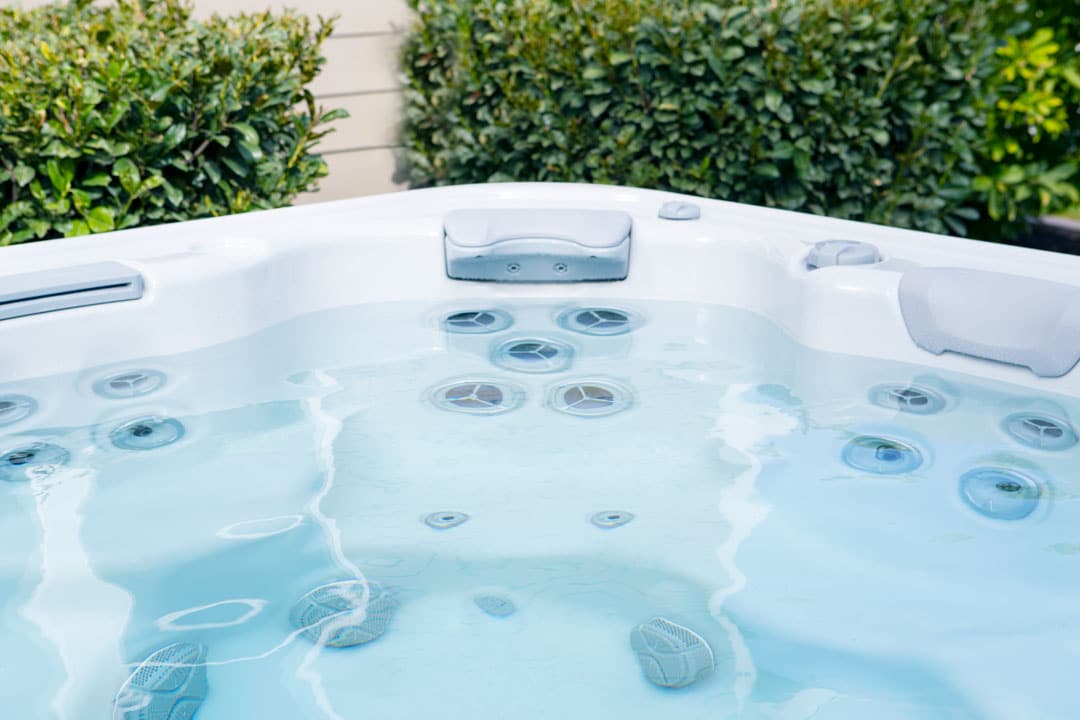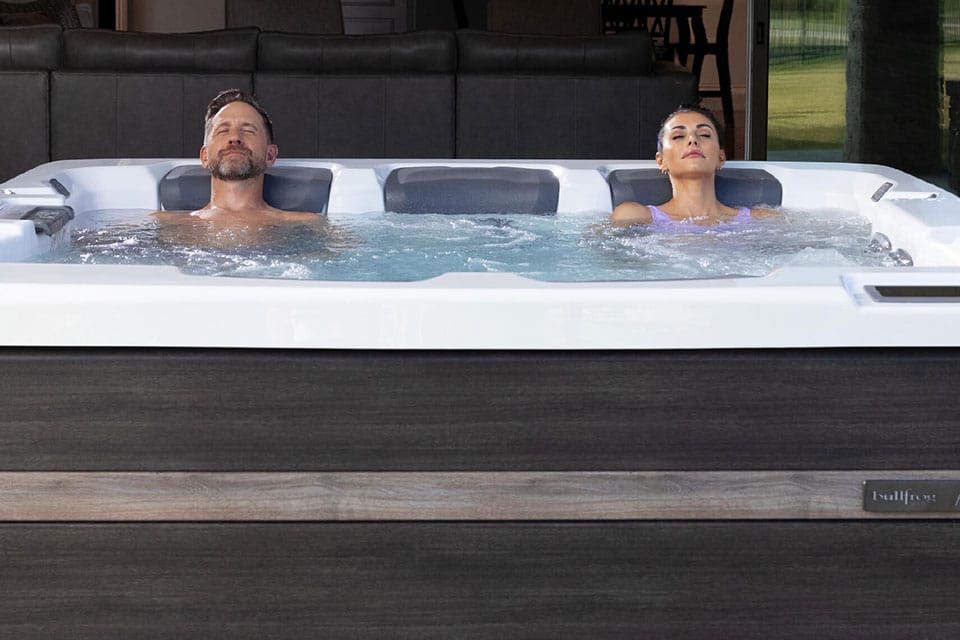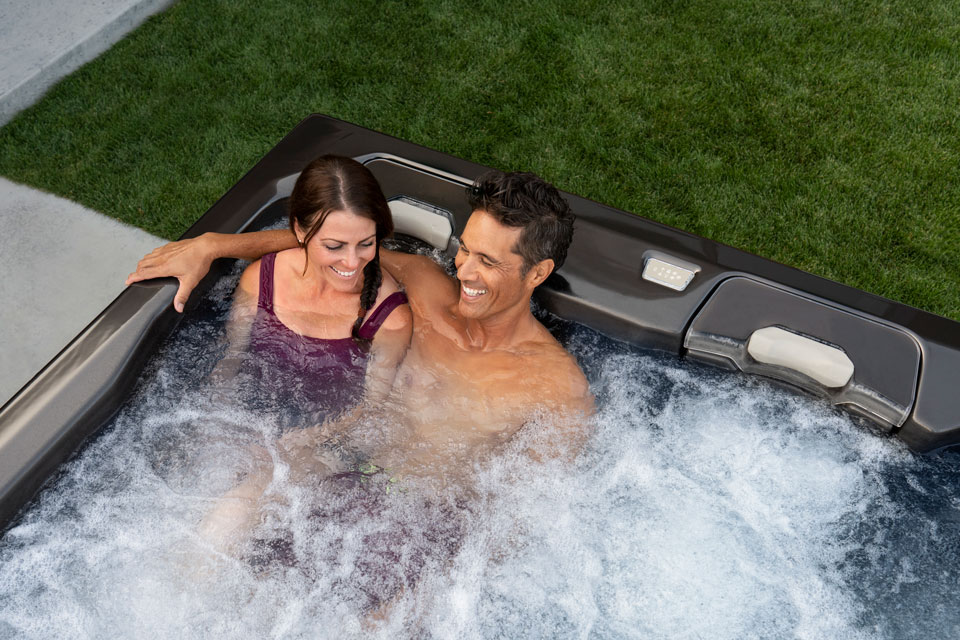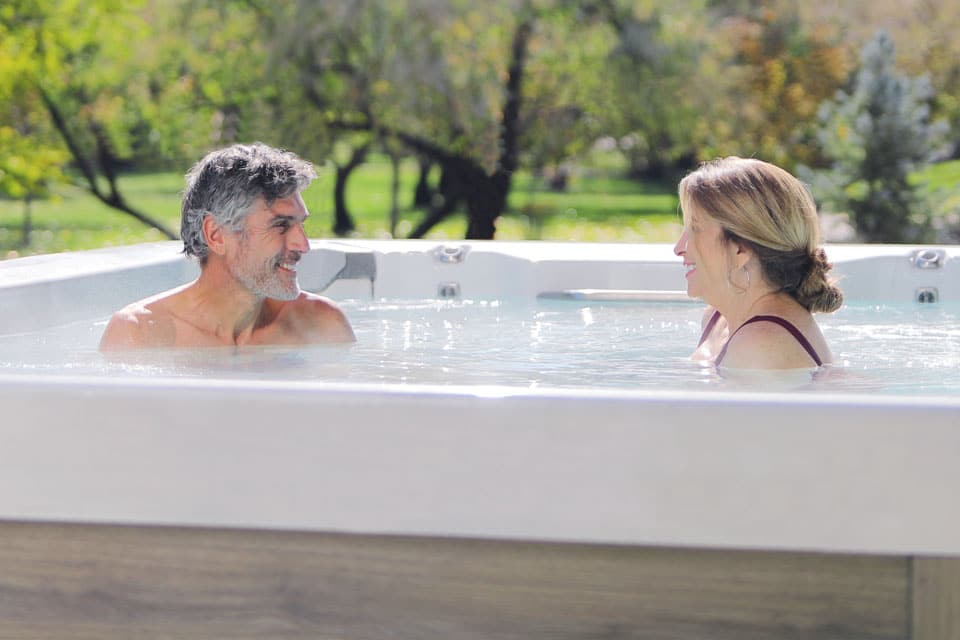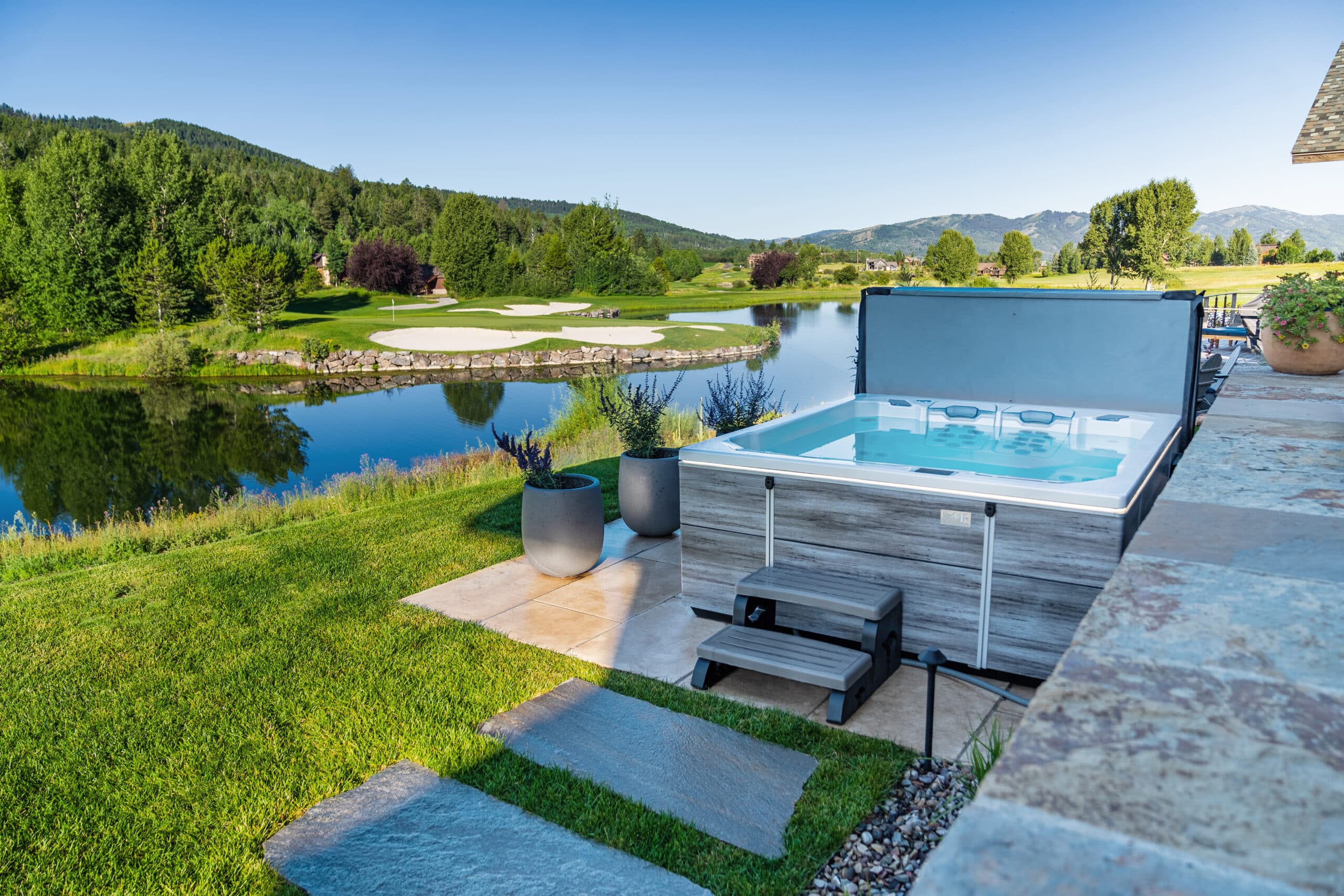When you’re looking to buy a hot tub, there are so many facts and details to research in order to make sure you’re getting the best product for your money. Unfortunately, not everyone realizes there are different materials from which the interior shell of the spa can be made. To make sure you get the right type of hot tub, this article discusses acrylic and fiberglass shells, the differences between the two materials, maintenance on them, and how long-term warranties are affected by those differences.
Strength and Durability
While these two materials may seem similar in makeup, they are actually very different, especially in the strength and durability department, and because of this, the price differences between the two are fairly significant. Fiberglass is lighter, and easier to manipulate, which means the molding process is easier, allowing it to be sprayed onto the hot tub mold. Whereas, acrylic must be laid out in a raw sheet, and heat-molded onto the spa mold to give it its shape. This process gives acrylic a much longer lifespan than we typically get from fiberglass.
From the outset, acrylic is a stronger material than fiberglass, and can withstand wear and tear for many years, while fiberglass has a tendency to scratch, fade, and even crack much more easily. It also requires consistent maintenance to avoid fading, chipping, and staining, while acrylic can be ignored for long periods of time and still be scrubbed clean, without risk of stains.
Cost
As mentioned above, the manufacturing process is significantly different, which makes fiberglass the less expensive choice, simply because creating a tub using fiberglass is a much simpler process.
Fiberglass is made from layers of tiny woven strings of glass that have been melted together using extreme heat. It’s one of the most affordable materials for bathtubs and/or hot tubs, and is easier to install than some other potential materials.
Acrylic hot tub shells are made using colored sheets of plastic reinforced with a sturdy frame that helps it hold its shape and adds a layer of strength and thickness. Like fiberglass, acrylic is somewhat lightweight, but it requires far less maintenance. Acrylic is much more durable than fiberglass, and unlikely to chip, crack or fade.
Maintenance and Cleaning
Both styles can be cleaned with simple cleaning solutions. However, if a fiberglass tub is not cleaned well, the tub will stain, absorb water, and could even grow mold or mildew, so keep this in mind when opting for a hot tub with a fiberglass shell, as it could make or break the lifespan of your spa.
Fiberglass
To care for your fiberglass spa, use only soft microfiber sponges or fabrics. It is also necessary to use special products, since harsh detergents can be particularly damaging to fiberglass surfaces if they contain alkalis and acids, chlorine or ammonia. Side effects of using cleaners that contain these substances include:
- A possible change in the water color
- Small cracks and scratches may form
- May make a smooth surface rough.
DO: It’s important to use only special products specifically made for cleaning fiberglass, such as non-abrasive paste, liquid soap, shower gel, or dishwashing liquids.
DON’T: use dishwasher detergents, bleach, limescale and rust remover products (unless they are specifically made for fiberglass).
DO: Use appropriate cleaning tools. Gently rub your fiberglass cleaner with a cloth or soft nylon brush.
DON’T: use steel sponges, sandpaper, or harsh brushes as they are too hard for fiberglass surfaces.
DO: use gloves and a mask when cleaning fiberglass and using cleaning products.
WARNING: Exposure to fiberglass dust and cleaning agents can irritate your skin, eyes or respiratory tract.
Acrylic
DO: For normal cleaning, use a mild dishwashing soap, window cleaner, or other products recommended by your local authorized Bullfrog Spas Dealer.
DON’T: use steel sponges, sandpaper, or harsh brushes.
DO: For stubborn stains, use a mild acrylic cleaner or a mild detergent. To apply these cleaners, use a soft, damp cloth, soft brush, or sponge. Rinse well and dry with a clean cloth.
DO: To clean hard water stains, remove light scratches and protect your spa shell, contact your authorized Bullfrog Spas Dealer.
Color Options and Appearance
When it comes to color options, you’re likely to have similar choices in each material. This is one of those points that comes down to manufacturing, supply and demand, and model updates for appearance. Although, fiberglass hot tubs do seem to have a few more options than acrylic. For instance, if you were looking at an in-ground (non-portable) fiberglass insert, your options will include a color palate of blues and greens, in addition to shades of white, gray, tan, black, and other variations of those colors.
When it comes to appearance, your best option is to first decide what you’re looking for in a spa, and then circle back to color options once you narrow down a manufacturer and model.
Comfort and Layout
We looked to see if there were differences in the layout of fiberglass versus acrylic spas, and what we’ve discovered is that most hot tubs that are made from fiberglass are intended to be installed in-ground. This means that they are created as a fiberglass shell, then have the components added during installation, rather than being completed as a unit in the manufacturing plant. This means that there are no limits to layout of these spas, since they can technically be custom sprayed.
However, this means that the jet options will be extremely limited, and they will not be nearly as sufficient for massage as one would hope. You’re also less-likely to get lounge seat options in a fiberglass model, and you’re almost guaranteed to have most of the footwell taken up by the intake system.
There are likely a few self-contained hot tubs that are made using fiberglass shells. There will always be companies that try to cut costs by using lesser-expensive materials. There are also a number of hot tub manufacturers who also make bathtubs for inside your house, and these companies often use fiberglass on multiple products in order to make the most of their production capabilities. Just keep in mind that, as in many industries, the hot tub industry is very much about getting what you’re willing to pay for.
Our Conclusion
All in all, from the information we’ve gathered, it appears that acrylic is a far superior material for wear and tear, cleaning and care, as well as comfort and design. Bullfrog Spas models are made with only the highest quality acrylic and ABS frame combination for the strongest, most durable shell and structure available.
Design Your Own Bullfrog Spa
Use the online Design Studio tool to choose your spa model, colors, JetPaks, and accessories. You’ll then receive an instant price quote and your local dealer’s contact information.
